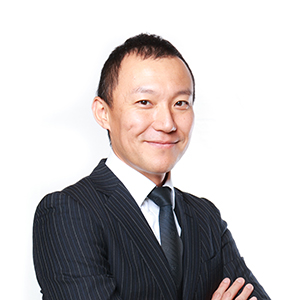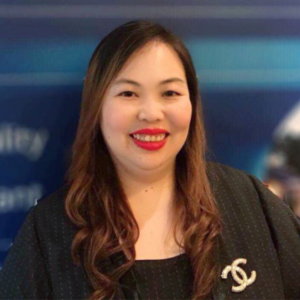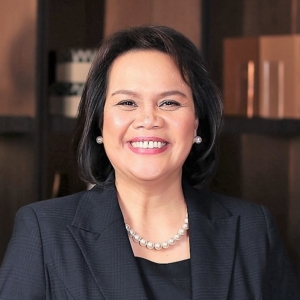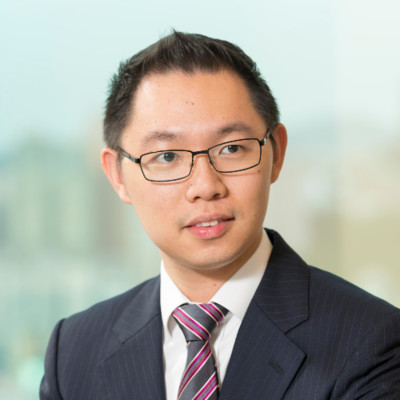My Career Journey with Kei Masuyama
Kei Masuyama
Risk Manager, Risk Management Department
Mitsubishi Heavy Industries, Ltd.
JapanKei joined MHI in April 2017. As the Group Risk Manager, he manages insurable risks to maximize group competitiveness. He is in-charge of running the MHI Global Insurance Program (MHI-GIP) consisting of Property Damage & Business Interruption (PDBI), Marine Stock Through Put (STP), Commercial General Liability (CGL) and Directors & Officers Liability (D&O).
Before joining MHI, Kei has been in the insurance industry mainly as an account executive for large Japanese commercial clients and a property underwriter for 17 years.

A quick look into Mitsubishi Heavy Industries
Mitsubishi Heavy Industries (MHI) is one of the world’s leading industrial firm and delivers innovative and integrated solutions across a wide range of industries covering land, sea, sky and space. Currently, 80,000+ employees are working in more than 300 MHI group companies world-wide operating in various sectors: power & energy, industrial machinery, urban infrastructure, aerospace and defense. The MHI Group’s latest consolidated revenue is around USD 40 billion.
The MHI Global Insurance Program (MHI-GIP) works as the “Risk Sensor” of the group. Considering MHI Group’s financial position, MHI-GIP does not have substantial amount of deductible or even nil deductible, which enables them to gather insured loss information by using the financial incentive of each business unit. Insured loss mitigation and reduction are part of their key activities to keep long term relationship with insurers and minimize total cost of risk through insured loss data collection, analyzation, and feedback to business units.
In my 20+ years in the insurance / risk management industry, I’ve experienced several turning moments:
- Why corporations purchase insurance
Back when I was an account executive for big Japanese commercial corporations, one of my largest clients told us that they would quit purchasing insurance considering their financial position and rich cash flow. On a pure financial perspective, it was difficult to justify purchasing insurance rather than self-insured retention. However, on an insurance claims operational perspective, there were certain needs of clients like claims handling outsourcing, loss data collection and loss cost-related benchmark information.
This reminded me that purchasing insurance was not only for contingent finance in event of a loss but also to utilizing insurers’ functions of insured loss-related operational stuff.
- Does Back-Mirror underwriting work in the future?
A few years later, I was responsible for another large commercial client and they need to have a coverage for their products stored in an open yard. Right after we started to write the policy, a large tropical storm hit the yard and had millions of insured loss. At that time, insurance underwriters relied more on historical loss data rather than scientific prediction, therefore it was called “Back-Mirror Underwriting”.
I learned that this approach doesn’t work for risks like weather-related natural catastrophe which might be affected by climate change and needs to have more sophisticated models to assess risks.
- MHI decides to hire a Group Risk Manager
MHI was founded in 1884; ever since then there has been no risk management role in place. Insurance policies had been purchased individually from insurers by each business unit from the same Mitsubishi Group.
Also, many large Japanese companies have grown parallel with Japan’s economic growth. In recent years, they had to look for new markets abroad and we have seen more overseas M&A deals to accelerate growth. At the same time, they needed to have a global corporate service function for smooth PMI including insurance risk management.
These are some of the factors behind MHI deciding to hire a new group risk manager in order to standardize group insurance risk management.
The core role of a risk manager is to be a good “communicator” with the management, insurers/brokers and business units/employees within the group.
To the management, the risk manager is like a consultant who comes up with ideas to protect the group from unforeseen losses and enhance business opportunities in line with the group strategy.
To Insurers/Brokers, we act as the company spokesman and decision-maker for the insurance program. As group insurance risk management professionals, we have to be transparent about risks being insured and be fair & reasonable in the decision-making process.
Most importantly, to business units / group employees, as they’re not insurance professionals, risk managers should be a translator who understands the risks business units are exposed to, available insurance coverage, minimize non-insurable risks and maximize their profit.
Speaking from experience, risk managers cannot achieve their goal without support from management and also each business unit and employee. As mentioned above, the clients of risk management services are primarily each business unit and employee. Like an insurer/broker account executive, risk managers have to communicate with them closely and support quickly to create mutual understanding and trust.
The core role of a risk manager is to be a good "communicator” with the management, insurers/brokers and business units/employees within the group.

My responsibility being solely on insurance risk management, I do experience the following pain points in running the MHI-GIP:
Data collection and accuracy check
As an owner of MHI-GIP, we have to collect underwriting information and also data used for premium allocation from all of the insureds in a timely manner. Because 300+ group companies now participate in the program, some group companies (newly joined companies) have not yet been integrated into our group financial reporting platform, which is why we have to collect required data manually and check them carefully in order to declare precise underwriting information to insurers.
Premium allocation to each insured
The hardest part of group insurance program management for me is making premium allocation “Fair and Reasonable”, otherwise group companies whose risk quality are better than the group average may leave the program and try to purchase their own program at a lower cost. It’s like being an underwriter of the program; the program owner has to design a premium allocation formula based on risks by using collected data.
Hardening insurance market
Same as other large commercial insureds, we’ve experienced a rapidly hardening insurance market and struggled to gather reasonable capacity. Also, we have to revisit our program structure to check program competitiveness and capital efficiency. A headache for risk managers is to explain to group companies why insurance premiums will go up even though loss records show good risk quality.
Some of you may know that the Japanese commercial insurance market is very unique and different from other countries. Historically, Japanese insurers and large commercial insureds have held their stocks mutually and most of the insureds have an inhouse insurance agent company within the group. The stock holding insurer and their in-house agent used to control insurance policies and there is no insurance risk manager in most of traditional Japanese insureds. In fact, I am the first group insurance risk manager in MHI since it was founded in 1884.
Now we can see rapid transition from the traditional “Insurer-controlled risk management” to the normal “Insured-lead risk management” mainly due to increasing social demand on corporate governance reform, risk management-related disclosure enhancement and change in risk appetite on commercial risks of insurers.
For risk managers, it’s not an easy time; we need to survive under a rapidly hardening insurance market. However, this is a very interesting period of time, not only for MHI but also for other traditional large Japanese insureds who are now trying to hire their insurance risk manager to retake risk management initiatives. Therefore, PARIMA will be a much more important platform for new risk managers to learn the latest trends or build relationships with other risk managers.
Obtaining the CPCU Designation
Chartered Property Casualty Underwriter (CPCU) is a professional designation in property-casualty insurance and risk management, administered by The Institutes (AKA American Institute for Chartered Property Casualty Underwriters). Achieving the designation requires completion of eight courses covering topics such as risk management, insurance operations, business law, finance and accounting, property insurance, and liability insurance. Held by fewer than 65,000 people (less than 4% of the insurance industry in the US), the CPCU designation is widely considered the most distinguished designation offered in the insurance industry in the US.
I started to study CPCU courses in 2011 when I was in the US as a property underwriter. Since then, it took me almost 4 years to pass all 8 exams and the CPCU designation since 2015. In Japan, approximately 200 CPCU holders are mostly in the insurance market; I’m now supporting several candidates as a mentor. CPCU is US based designation but it’s quite comprehensive and good to learn the latest insurance and risk management topics. I strongly recommend obtaining the CPCU if you are working in the insurance risk management industry, especially for persons involved in large commercial, global complex exposures.
Playing golf
This is the fun part and at the same time crucial to maintaining the quality of life. Experts say that if players follow guidelines correctly, golf is one of the safest activities people can participate in during the pandemic.
I used to play golf 3-4 times a year but decided to move from my former apartment located in Tokyo to suburb area 1.5 hours away from the city but much closer to golf courses (and also much cheaper rent cost) to become a single handicap golfer!




